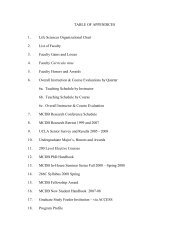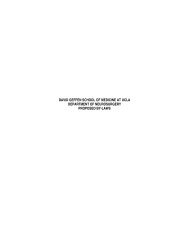Departmental Self Review - UCLA Academic Senate
Departmental Self Review - UCLA Academic Senate
Departmental Self Review - UCLA Academic Senate
- No tags were found...
You also want an ePaper? Increase the reach of your titles
YUMPU automatically turns print PDFs into web optimized ePapers that Google loves.
and/ or education based on evaluation of nursing theory”. The items that consistently showed higherscores were: “I apply theory related to cultural diversity to the nursing process”, “I read and evaluatepublished nursing research”, “I collaborate with other members of the health care team to develop ahealth care program”, “I collaborate with other members of the health team to implement and evaluate ahealth care program”, “I demonstrate leadership skills which contribute to the improvement of health careof clients from diverse cultural backgrounds”, “I use teaching/learning theories in my clinical practice,e.g., in educating patients, families or other health care providers”, “I utilize evidence-based conceptsfound in the existing literature in my clinical practice.”The Educational Benchmarking Inventory (EBI). This tool is a computer based assessmentcompleted at the end of our master level specialty programs. We have participated in EBI since 2005. Itis completed by programs across the country, thus allowing us to benchmark based on comparisonsamong 61 institutions. In addition, we select 6 institutions for further comparisons. These include theUniversity of Pennsylvania, University of Pittsburgh, Oregon Health and Science University, Universityof Michigan, University of North Carolina Chapel Hill, and Yale University. Generally response rateshave been over 50%; however, in 2007-2008, we had a response rate of 38% (47/125) which is slightlylower than for the overall group of surveyed institutions (48%).The results from the EBI indicate that the SON meets or exceeds the standard set by EBI in the AACNcore competencies for masters programs in the following areas: Research, Policy, Organization andFinancing of Health Care, Ethics, Professional Development, Theoretical Basis of Care, HumanDiversity, Health Promotion, Disease Prevention, Advanced Health Physical Assessment, AdvancedPhysiology, Pathophysiology, and Advanced Pharmacology. In comparing our performance on the EBIbetween 2007 and 2008, we have small insignificant trends down in overall satisfaction with the program.The certifications passage rates have been previously discussed and are appended in Appendix D.Certification pass rates have been increasing across specialties from 2006-07. The GNP certification rates(80%) have improved but are still lower than optimal. In order to increase pass rates, faculty arerecommending preparation strategies for students including review sessions, books and suggestions fromprevious graduates who have successfully passed the certification examination.PhD ProgramThe Doctor of Science Achievement and Critical Thinking Assessment (DSACTA). This toolhas been used to assess self-rated achievement of competencies for the doctoral program. It hadoriginally been a 56-item inventory that has been revised into a 27-item inventory in 2007. The smallnumbers of graduates in any one year and the large variability of the data make the results for this surveydifficult to interpret. We do not have data from the revised edition of the survey to date. Data in 2006demonstrates small, but insignificant increases in the means of most of the 56 items (See Appendix R).IX. Future Goals of the <strong>Academic</strong> ProgramsFuture goals of the pre-licensure programs are to maintain enrollments at between 50-60 students perclass and to evaluate the effectiveness of the program by surveying our clinical partners to assess howthese nurses are being utilized within the health care system. We will continue to evaluate NCLEX andCNL certification pass rates as indicators of program success. In regards to our post-baccalaureateprograms, as prevailing trends in nursing change; specifically related to 2015 recommendation of theAACN to implement specialty practice at the Doctor of Nursing Practice level, we may have to evaluatedecreasing admissions to the MSN specialty programs and increased enrollment to the MECN program.This will be contingent on availability of placements for our students’ clinical practicums. In an effort toincrease the enrollment in the doctoral program, we have received funding from HRSA to establish a pre-23



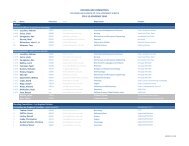
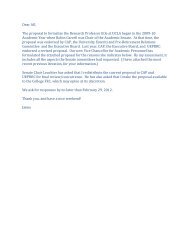
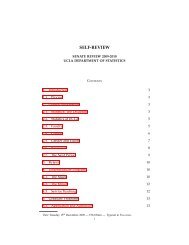


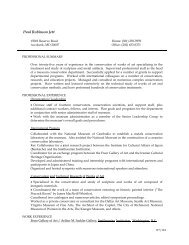


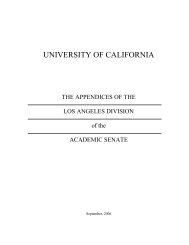
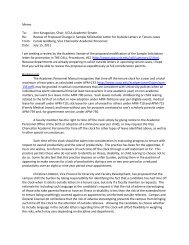
![Schedule[Final] Summer Sessions - UCLA Academic Senate](https://img.yumpu.com/42025221/1/190x245/schedulefinal-summer-sessions-ucla-academic-senate.jpg?quality=85)
